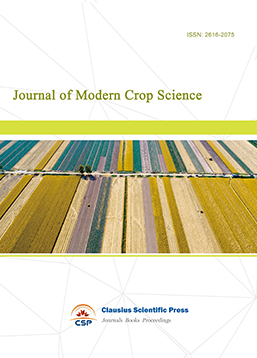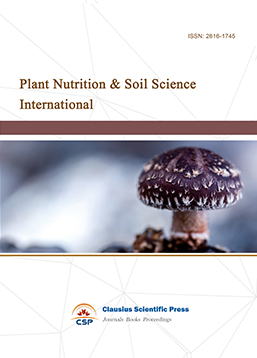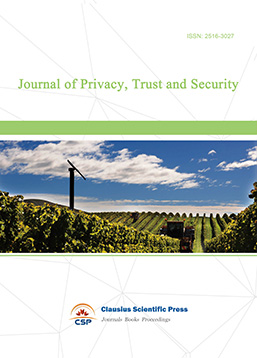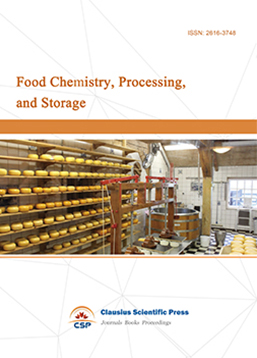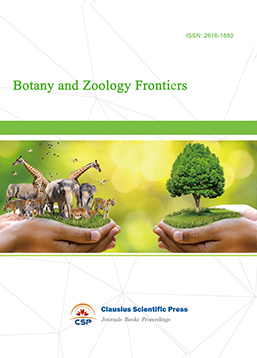Generation of cultured beef from bovine embryonic stem cells
DOI: 10.23977/afshn.2024.060113 | Downloads: 37 | Views: 1336
Author(s)
Xue Rui 1, Zehan Li 1, Jiehuan Xu 2, Jianjun Dai 2, Xiaohui Zhang 1, Xiao Jin 1, Yang Liu 1
Affiliation(s)
1 C Future Biotechnology Co., Ltd., Shanghai, China
2 Shanghai Municipal Key Laboratory of Agri-Genetics and Breeding, Institute of Animal Husbandry and Veterinary Science, Shanghai Academy of Agricultural Sciences, Shanghai, China
Corresponding Author
Yang LiuABSTRACT
Bovine embryonic stem cells (bESCs) serve as an optimal source for generating muscle and fat tissues. However, systematic methodologies for creating cultured beef from bESCs have not yet been reported. Here, we successfully established a bESC line and formulated a specialized culture medium that supports cell pluripotency in both two-dimensional (2D) and three-dimensional (3D) cultures. Additionally, we have also developed serum-free and transgene-free protocols that efficiently differentiate bESCs into muscle and fat cells. These differentiated cells were validated at the transcriptional and protein levels. Furthermore, we devised a method using high moisture stretched plant-based protein scaffolds for incorporating differentiated muscle and fat cells derived from bESCs, producing an innovative plant-cell hybrid cultured beef. These advancements provide a solid foundation for future cultured beef production using pluripotent stem cells.
KEYWORDS
Bovine embryonic stem cells, muscle, fat, hybrid, cultured meatCITE THIS PAPER
Xue Rui, Zehan Li, Jiehuan Xu, Jianjun Dai, Xiaohui Zhang, Xiao Jin, Yang Liu, Generation of cultured beef from bovine embryonic stem cells. Advances in Food Science and Human Nutrition (2024) Vol.6: 92-111. DOI: http://dx.doi.org/10.23977/afshn.2024.060113.
REFERENCES
[1] Datar, I. and M. Betti, Possibilities for an in vitro meat production system. Innovative Food Science & Emerging Technologies, 2010. 11(1): p. 13-22.
[2] Gaydhane, M.K., et al., Cultured meat: state of the art and future. Biomanufacturing Reviews, 2018. 3(1).
[3] Post, M.J., et al., Scientific, sustainability and regulatory challenges of cultured meat. Nature Food, 2020. 1(7): p. 403-415.
[4] Ding, S., et al., Maintaining bovine satellite cells stemness through p38 pathway. Sci Rep, 2018. 8(1): p. 10808.
[5] Dohmen, R.G.J., et al., Muscle-derived fibro-adipogenic progenitor cells for production of cultured bovine adipose tissue. NPJ Sci Food, 2022. 6(1): p. 6.
[6] Stout, A.J., et al., Immortalized Bovine Satellite Cells for Cultured Meat Applications. ACS Synth Biol, 2023. 12(5): p. 1567-1573.
[7] Pasitka, L., et al., Spontaneous immortalization of chicken fibroblasts generates stable, high-yield cell lines for serum-free production of cultured meat. Nature Food, 2022.
[8] Saad, M.K., et al., Continuous fish muscle cell line with capacity for myogenic and adipogenic-like phenotypes. Sci Rep, 2023. 13(1): p. 5098.
[9] Zhi, M., et al., Generation and characterization of stable pig pregastrulation epiblast stem cell lines. Cell Res, 2022. 32(4): p. 383-400.
[10] Zhu, G., et al., Generation of three-dimensional meat-like tissue from stable pig epiblast stem cells. Nat Commun, 2023. 14(1): p. 8163.
[11] Bogliotti, Y.S., et al., Efficient derivation of stable primed pluripotent embryonic stem cells from bovine blastocysts. Proc Natl Acad Sci U S A, 2018. 115(9): p. 2090-2095.
[12] Zhao, L., et al., Establishment of bovine expanded potential stem cells. Proc Natl Acad Sci U S A, 2021. 118(15).
[13] Kinoshita, M., et al., Pluripotent stem cells related to embryonic disc exhibit common self-renewal requirements in diverse livestock species. Development, 2021. 148(23).
[14] Martins, B., et al., Advances and Challenges in Cell Biology for Cultured Meat. Annu Rev Anim Biosci, 2024. 12: p. 345-368.
[15] Jara, T.C., et al., Stem cell-based strategies and challenges for production of cultivated meat. Nat Food, 2023. 4(10): p. 841-853.
[16] Soto, D.A., et al., Simplification of culture conditions and feeder-free expansion of bovine embryonic stem cells. Sci Rep, 2021. 11(1): p. 11045.
[17] Jin, W., et al., Rapid and robust derivation of mesenchymal stem cells from human pluripotent stem cells via temporal induction of neuralized ectoderm. Cell Biosci, 2022. 12(1): p. 31.
[18] Pfutzner, A., et al., Mesenchymal Stem Cell Differentiation into Adipocytes Is Equally Induced by Insulin and Proinsulin In Vitro. Int J Stem Cells, 2017. 10(2): p. 154-159.
[19] Hwang, Y.H. and S.T. Joo, Fatty Acid Profiles, Meat Quality, and Sensory Palatability of Grain-fed and Grass-fed Beef from Hanwoo, American, and Australian Crossbred Cattle. Korean J Food Sci Anim Resour, 2017. 37(2): p. 153-161.
[20] Simsa, R., et al., Extracellular Heme Proteins Influence Bovine Myosatellite Cell Proliferation and the Color of Cell-Based Meat. Foods, 2019. 8(10).
[21] Soice, E. and J. Johnston, Immortalizing Cells for Human Consumption. Int J Mol Sci, 2021. 22(21).
[22] Torizal, F.G., et al., A miniature dialysis-culture device allows high-density human-induced pluripotent stem cells expansion from growth factor accumulation. Commun Biol, 2021. 4(1): p. 1316.
[23] Manstein, F., et al., High density bioprocessing of human pluripotent stem cells by metabolic control and in silico modeling. Stem Cells Transl Med, 2021. 10(7): p. 1063-1080.
[24] Lei, Y. and D.V. Schaffer, A fully defined and scalable 3D culture system for human pluripotent stem cell expansion and differentiation. Proceedings of the National Academy of Sciences, 2013. 110(52).
[25] Yuen, J.S.K., Jr., et al., Aggregating in vitro-grown adipocytes to produce macroscale cell-cultured fat tissue with tunable lipid compositions for food applications. Elife, 2023. 12.
[26] Chal, J., et al., Generation of human muscle fibers and satellite-like cells from human pluripotent stem cells in vitro. Nat Protoc, 2016. 11(10): p. 1833-1850.
[27] Rao, J., et al., Reconstructing human brown fat developmental trajectory in vitro. Dev Cell, 2023. 58(21): p. 2359-2375 e8.
[28] Pawlowski, M., et al., Inducible and Deterministic Forward Programming of Human Pluripotent Stem Cells into Neurons, Skeletal Myocytes, and Oligodendrocytes. Stem Cell Reports, 2017. 8(4): p. 803-812.
[29] Ahfeldt, T., et al., Programming human pluripotent stem cells into white and brown adipocytes. Nat Cell Biol, 2012. 14(2): p. 209-219.
[30] Edward, C.W., Cis/Trans-Fatty Acid Content of Red Meats and the Related Effects on Meat Quality and Human Health, in Meat and Nutrition, R. Chhabi Lal, Editor. 2021, IntechOpen: Rijeka. p. Ch. 7.
[31] Juarez, M., et al., Enhancing the Nutritional Value of Red Meat through Genetic and Feeding Strategies. Foods, 2021. 10(4).
[32] Kahn-Krell, A., et al., Bioreactor Suspension Culture: Differentiation and Production of Cardiomyocyte Spheroids From Human Induced Pluripotent Stem Cells. Front Bioeng Biotechnol, 2021. 9: p. 674260.
[33] Torizal, F.G., et al., Dialysis based-culture medium conditioning improved the generation of human induced pluripotent stem cell derived-liver organoid in a high cell density. Sci Rep, 2022. 12(1): p. 20774.
[34] Lin, H., et al., A Scalable and Efficient Bioprocess for Manufacturing Human Pluripotent Stem Cell-Derived Endothelial Cells. Stem Cell Reports, 2018. 11(2): p. 454-469.
[35] Yan, L., et al., Scalable Generation of Mesenchymal Stem Cells from Human Embryonic Stem Cells in 3D. Int J Biol Sci, 2018. 14(10): p. 1196-1210.
[36] Sexton, A.E., T. Garnett, and J. Lorimer, Framing the future of food: The contested promises of alternative proteins. Environ Plan E Nat Space, 2019. 2(1): p. 47-72.
[37] Kumar, M., et al., Functional characterization of plant-based protein to determine its quality for food applications. Food Hydrocolloids, 2022. 123.
[38] Yao, Y., et al., Cultivated Meat from Aligned Muscle Layers and Adipose Layers Formed from Glutenin Films. ACS Biomater Sci Eng, 2024. 10(2): p. 814-824.
[39] Ben-Arye, T., et al., Textured soy protein scaffolds enable the generation of three-dimensional bovine skeletal muscle tissue for cell-based meat. Nature Food, 2020. 1(4): p. 210-220.
[40] Xiang, N., et al., Edible films for cultivated meat production. Biomaterials, 2022. 287: p. 121659.
[41] Stout, A.J., et al., Simple and effective serum-free medium for sustained expansion of bovine satellite cells for cell cultured meat. Commun Biol, 2022. 5(1): p. 466.
[42] Kanayama, T., et al., Improving the Safety of Cultured Meat Using Basal Medium Prepared using Food Ingredients. bioRxiv, 2022: p. 2022.03. 28.486069.
[43] Lei, Q., et al., Efficient expression of a cytokine combination in Saccharomyces cerevisiae for cultured meat production. Food Research International, 2023. 170: p. 113017.
[44] Yang, M., et al., Cell culture medium cycling in cultured meat: Key factors and potential strategies. Trends in Food Science & Technology, 2023. 138: p. 564-576.
| Downloads: | 2658 |
|---|---|
| Visits: | 94176 |

 Download as PDF
Download as PDF